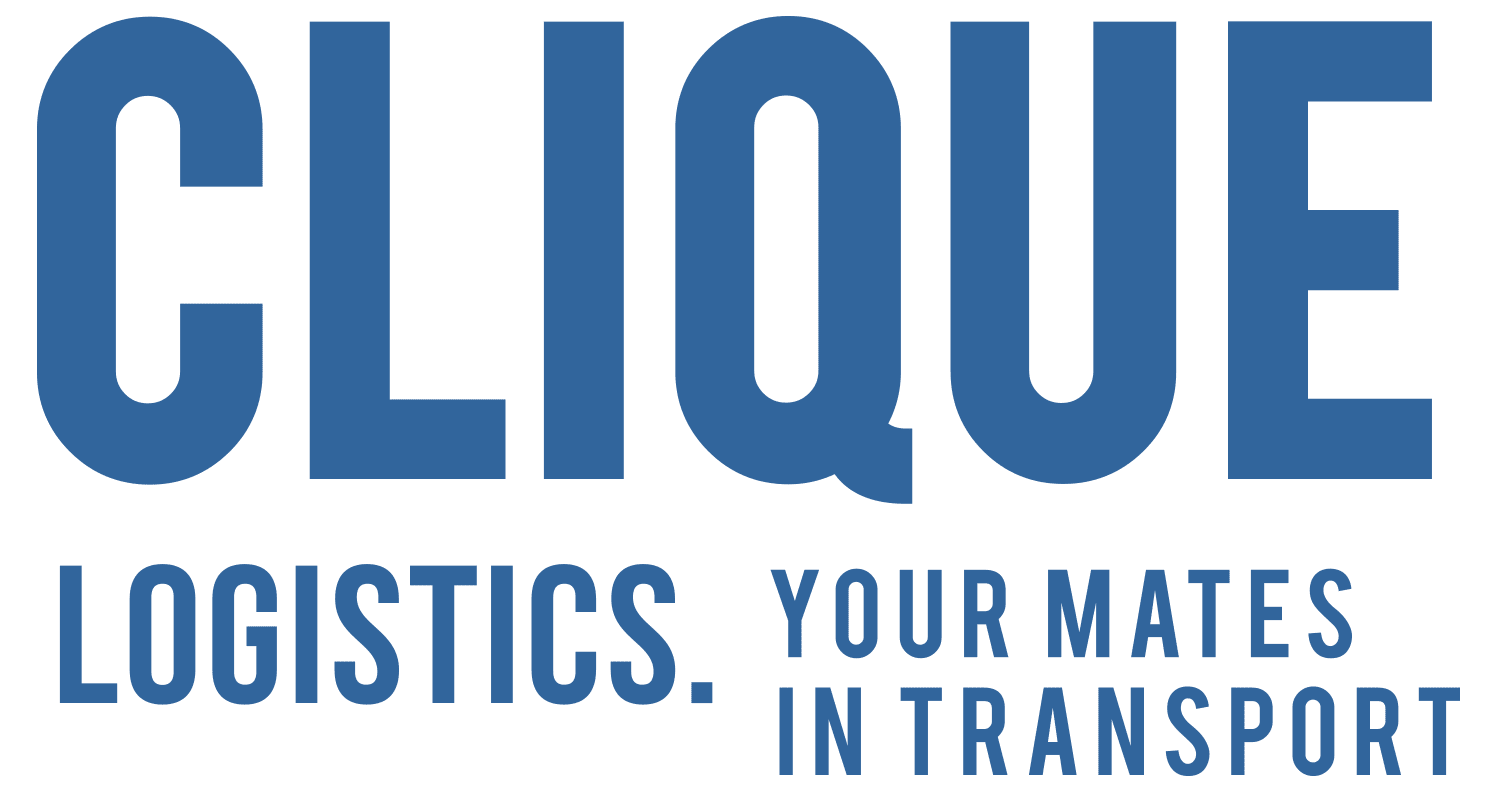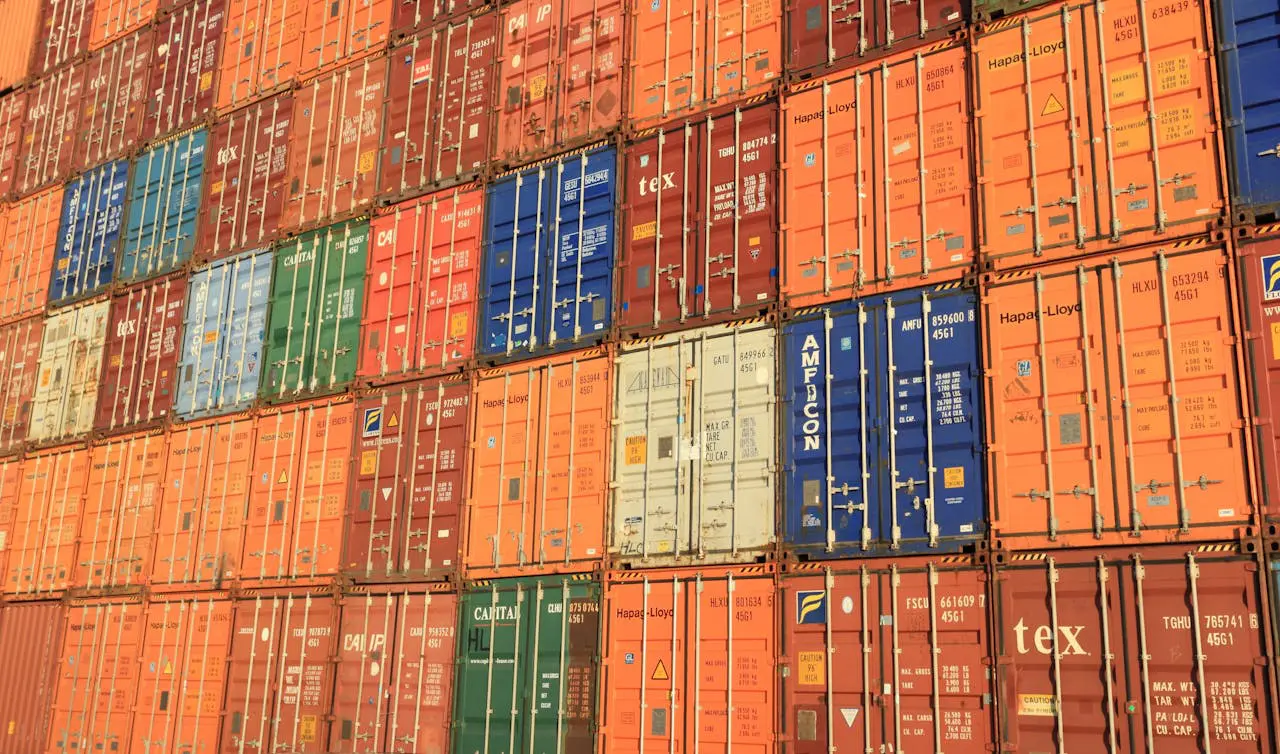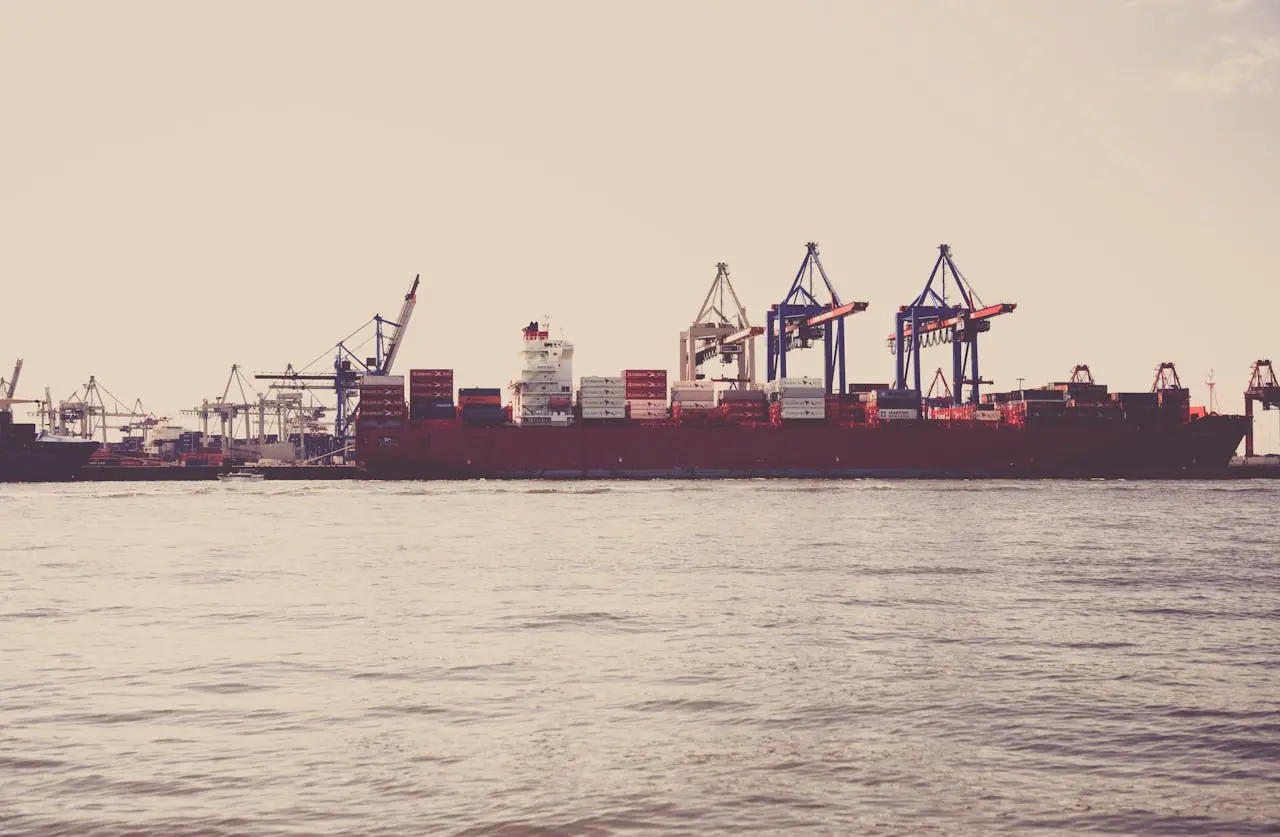Emerging AI Technologies in Transport Management
Think of the way the internet transformed communication; emerging AI technologies are set to do the same for transport management. With innovations in autonomous vehicles and smart traffic systems, efficiency and safety are reaching new heights. But what does this mean for the industry and its stakeholders? Understanding the implications and steering through the challenges can redefine how we operate in this evolving environment.
Overview of AI in Transport Management
As AI technologies continue to evolve, they’re transforming transport management by streamlining processes and boosting efficiency.
You’ll notice that route optimisation is now smarter than ever, thanks to advanced algorithms that analyse historical data. This significantly reduces empty miles and lowers transportation costs.
Predictive analytics plays a vital role in anticipating demand patterns and maintenance needs, improving operational efficiency.
With real-time tracking, you gain greater visibility across the supply chain, enabling quick identification of potential disruptions and enhancing customer satisfaction.
Furthermore, AI-driven smart traffic management systems use real-time data to reduce congestion and improve traffic flow, ultimately making roads safer.
Embracing these innovations positions you for success in an increasingly competitive transport environment.
Key Advancements in AI Technologies
You’ll find that advancements like autonomous vehicles, smart traffic management solutions, and AI-driven logistics optimisation are reshaping the transport environment.
These technologies not only boost efficiency but furthermore improve safety and reduce operational costs.
Let’s investigate how each of these innovations is making a significant impact.
Autonomous Vehicle
How are autonomous vehicles changing the way we think about transportation?
These vehicles use advanced AI algorithms and machine learning to process data from sensors and cameras, enabling real-time updates for navigation and obstacle avoidance.
With improved safety features, autonomous vehicles significantly reduce human error, which causes over 90% of traffic accidents, making roadways safer.
They can communicate with each other and infrastructure to improve traffic flow, reducing congestion through coordinated movements.
Furthermore, the integration of computer vision helps them recognise road signs and pedestrians effectively.
Continuous advancements in AI allow for route optimisation, leading to fuel savings of up to 15%, which is essential for reducing costs in the transport industry.
Smart Traffic Management Solutions
With the increasing complexity of urban traffic systems, smart traffic management solutions are emerging as a vital tool in optimising vehicle flow and enhancing efficiency.
These systems utilise AI algorithms and real-time data analytics to reduce congestion and improve overall traffic conditions. By analysing vast amounts of traffic data, they predict patterns and dynamically adjust signal timings, which can significantly cut travel times and fuel consumption.
Furthermore, smart traffic management prioritises emergency vehicles at intersections, enhancing public safety.
With advanced sensor integration, cities can implement evidence-based improvements in infrastructure, leading to better air quality and sustainability.
Ultimately, these innovative technologies not only streamline traffic but also create safer, more efficient urban environments for everyone.
AI-Driven Logistics Optimisation
As logistics challenges continue to grow, AI-driven logistics optimisation is emerging as a transformative force in the industry.
By leveraging machine learning algorithms for demand forecasting, you can improve accuracy and predict market trends, reducing excess stock by up to 30%.
Predictive analytics allows real-time monitoring of supply chain dynamics, helping you identify potential disruptions early and improving operational efficiency by 25%.
Route optimisation algorithms analyse historical and current traffic data, permitting you to calculate the most efficient delivery paths, cutting fuel consumption by 10-15%.
Moreover, AI streamlines automated inventory management, maintaining ideal stock levels and reducing holding costs by 20%.
With smarter load planning, companies can achieve a 15% increase in transportation capacity, revolutionising logistics operations.
Benefits of AI Integration
When you integrate AI into transport management, you unlock a range of benefits that improve safety and operational efficiency.
You’ll notice enhancements in real-time monitoring and predictive analytics, which not only streamline processes but likewise create personalised experiences for your customers.
Embracing these technologies can transform how you manage transport logistics, making your operations smarter and more responsive.
Enhanced Safety Measures
Although the integration of AI in transport management presents numerous benefits, one of the most significant impacts is on safety measures. By utilising advanced AI technologies, you can significantly reduce human error, as autonomous vehicles make real-time decisions based on sensor data. This leads to fewer accidents and improved road safety and efficiency.
Predictive analytics plays a vital role by analysing vast amounts of traffic data to predict potential hazards, thus creating safer driving environments. Moreover, AI-powered smart traffic management systems optimise vehicle flow, reducing congestion and minimising stop-and-go situations that often lead to accidents.
With real-time monitoring of driver behaviour and vehicle performance, timely interventions can improve overall safety standards, ensuring a more secure transport experience for everyone involved.
Improved Operational Efficiency
Integrating AI technologies in transport management not only streamlines processes but furthermore improves overall operational efficiency.
By utilising data analytics, you can reduce empty miles in trucking from 30% to as low as 10-15%, optimising resource utilisation and cutting costs.
Machine learning algorithms improve route optimisation, leading to lower fuel consumption and emissions, which supports sustainability efforts.
Predictive maintenance powered by AI anticipates vehicle needs, minimising downtime and extending asset lifespans.
In addition, real-time tracking and monitoring systems increase visibility across the supply chain, allowing for quick identification of potential disruptions.
This all-encompassing approach not only improves service delivery times but also nurtures a more efficient logistics operation, ultimately benefiting your bottom line.
Personalised Customer Experiences
AI integration in transport management transforms how you interact with customers, creating personalised experiences that cater to their unique preferences.
By harnessing vast amounts of customer data, AI solutions tailor services and recommendations based on individual behaviours. Real-time tracking keeps customers updated on their deliveries, improving satisfaction and trust in your logistics operations.
Furthermore, AI-driven chatbots provide instant support, offering personalised responses to inquiries and swiftly resolving issues. Advanced analytics predict customer needs, allowing you to proactively suggest ideal delivery times and customised routing options.
Using AI for feedback analysis helps you continuously improve services by identifying trends and areas for improvement based on customer experiences and satisfaction ratings.
This way, you can cultivate lasting relationships with your customers.
Challenges and Considerations
While the promise of AI in transport management is undeniable, several challenges must be addressed to guarantee successful implementation.
First, data privacy is a significant concern; you’ll need to comply with regulations like GDPR to protect user information.
Furthermore, algorithmic biases can skew decision-making, so conducting thorough audits of AI systems is vital for fairness and transparency.
You must also invest in employee training to make certain your staff can effectively use these advanced technologies.
In addition, maintaining system compatibility across different platforms can be tricky, which may hinder your efforts.
Finally, continuous evaluation of your AI systems is important to adapt to market changes and align with organisational goals, ensuring operational efficiency in a fast-paced environment.
Real-World Applications
Revolutionising transport management and real-world applications of emerging technologies are transforming how businesses operate.
Artificial intelligence (AI) is at the forefront, optimising routes by analysing historical traffic patterns and real-time data. This can reduce empty miles in freight logistics from 30% to just 10-15%.
With predictive analytics, companies improve inventory management by accurately forecasting demand, minimising waste, and preventing stockouts.
AI-driven real-time tracking systems boost supply chain management visibility, allowing you to identify and address potential disruptions proactively.
In addition, smart traffic management systems improve vehicle flow, cutting congestion and reducing fuel consumption.
These innovations not only improve operational efficiency but additionally contribute to a safer, more sustainable transport environment.
Future Trends in AI and Transportation
As you look to the future of transportation, sustainable mobility solutions will likely take centre stage, driven by AI advancements.
You’ll see operational excellence emerge as AI optimises everything from route planning to energy management.
This shift not only improves efficiency but additionally paves the way for greener, smarter urban environments.
Sustainable Mobility Solutions
With the increasing urgency of climate change, sustainable mobility solutions are becoming essential in the transportation sector.
You can utilise AI technologies to optimise energy consumption and significantly reduce emissions in transportation systems. Smart traffic management systems improve urban mobility by coordinating traffic flow, alleviating congestion, and cutting greenhouse gas emissions.
By developing autonomous electric vehicles powered by AI, you can create zero-emission transport options, offering cleaner alternatives for commuting and freight.
Moreover, integrating AI into public transport improves scheduling and routing, making sustainable options more appealing.
Finally, AI algorithms support multimodal transport solutions, promoting a shift away from single-vehicle use while optimising connections between biking, walking, and public transit, ultimately improving overall sustainable mobility.
Operational Excellence Through AI
Embracing AI technologies can significantly improve operational excellence in transport management. By leveraging advanced algorithms, you can refine route planning and resource allocation, which boosts efficiency in the logistics industry.
Predictive maintenance is another key benefit, as it reduces vehicle downtime and extends asset lifespan through real-time health monitoring.
With AI in logistics, supply chain tracking becomes seamless, allowing early identification of potential disruptions and improving responsiveness.
Furthermore, AI-driven demand forecasting utilises historical data to maintain ideal stock levels, cutting costs related to overstock or stockouts.
In last-mile delivery, analysing customer data facilitates better scheduling and dynamic resource allocation, leading to faster service and increased customer satisfaction.
Ultimately, these innovations pave the way for a more efficient future in transport management.
Strategies for Successful AI Adoption
To successfully adopt AI in transport management, you need to start by evaluating your business needs to identify areas for improvement.
Next, develop a clear roadmap for integration that outlines the steps and resources required.
Don’t forget to prioritise training and upskilling your employees to guarantee they’re equipped to work with these new technologies effectively.
Assessing Business Needs
As you consider implementing AI technologies in transport management, identifying specific logistics challenges within your organisation is vital.
Start by evaluating business needs to guarantee that your AI adoption aligns with those challenges. Engage stakeholders early in the process; their input will help tailor the technology to meet operational requirements and address concerns.
Make certain you’re collecting high-quality data, as this is fundamental for accurate analysis and effective AI model training.
Establish clear performance metrics and KPIs before deploying AI solutions, so you can measure success and make data-driven adjustments.
Finally, commit to continuous monitoring and feedback collection post-implementation, ensuring that your AI technology evolves to meet changing business needs and market conditions.
Developing a Roadmap for Integration
While integrating AI technologies into transport management can seem challenging, a well-structured roadmap can guide your organisation through the process.
Start with a thorough assessment of your existing logistics and supply chain processes, identifying specific challenges that artificial intelligence (AI) can address. Engaging stakeholders at all levels promotes collaboration and guarantees buy-in.
Focus on high-quality data collection while complying with privacy regulations; real-time data is vital for effective AI models.
Consider pilot-testing AI solutions on a smaller scale to validate their effectiveness.
Finally, implement continuous monitoring and establish key performance indicators (KPIs) to assess the impact of AI solutions.
This structured approach not only maximises investment opportunities but also improves overall operational efficiency.
Training and Upskilling Employees
Integrating AI technologies into transport management not only requires a solid roadmap but furthermore a workforce equipped to utilise these advancements.
Effective training programs improve your team’s understanding of AI technologies, boosting productivity by 20-30%. Upskilling employees in data analytics and AI tools is essential, especially since 70% of organisations face a skills gap.
Adopt continuous learning initiatives, like workshops and online courses, to raise engagement and retention—companies investing in development see 34% higher retention rates.
Implementing a mentorship system can assist in knowledge transfer and improve the transition to AI.
Finally, regular assessments and feedback mechanisms should be established to evaluate progress, as organisations utilising these loops enhance training outcomes by 25%.
Prioritise these strategies to guarantee successful AI adoption.
Conclusion
As you navigate the rapidly evolving environment of transport management, one question looms large: Are you ready to accept the AI revolution? The advancements in autonomous vehicles, smart traffic systems, and predictive analytics promise not just efficiency but a transformative shift in how we manage transport. Nevertheless, the path isn’t without challenges. The future of transportation hinges on your willingness to adapt and innovate—will you seize this opportunity or let it pass you by? The choice is yours.





